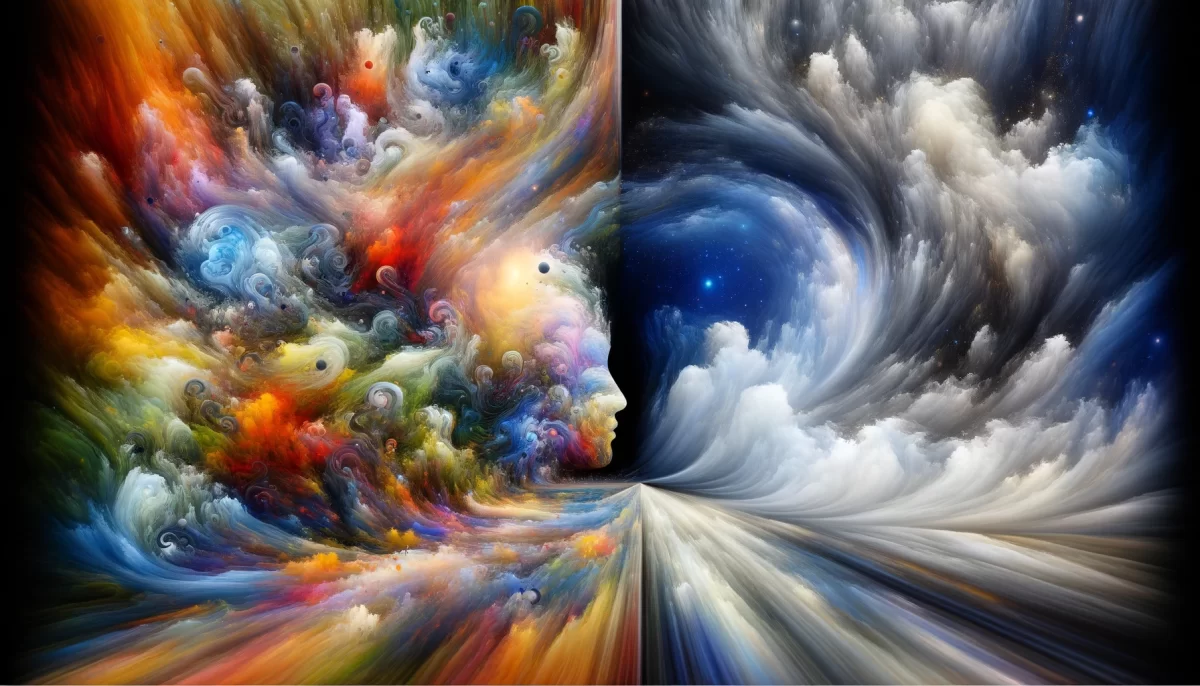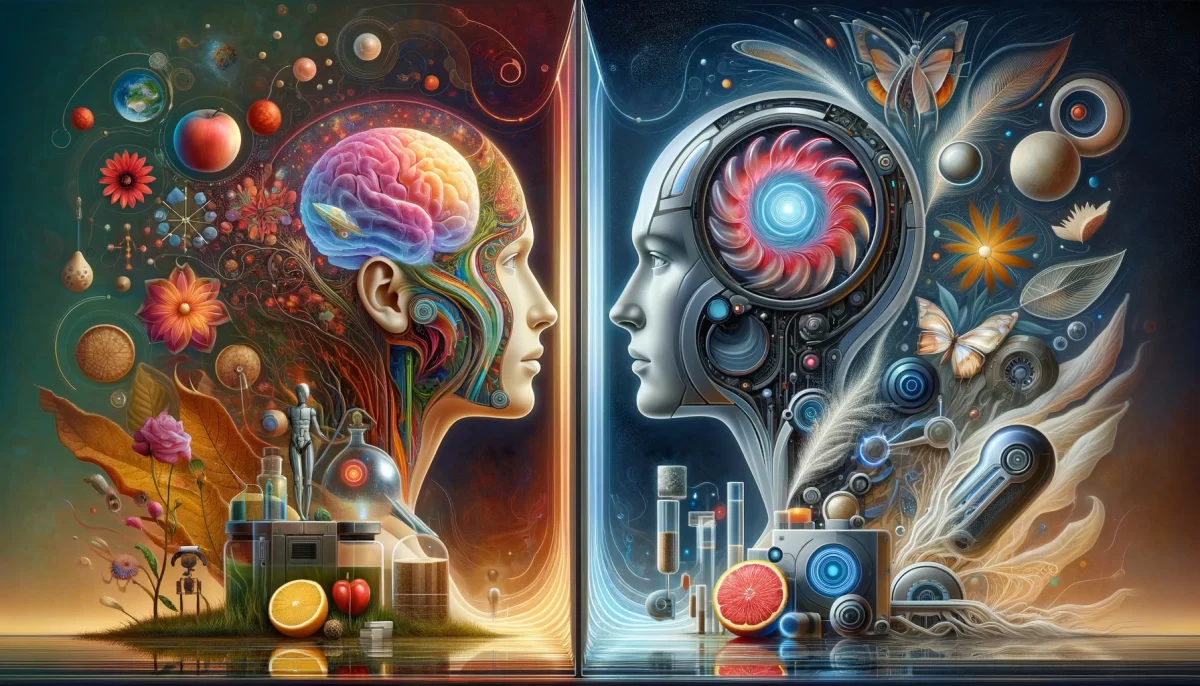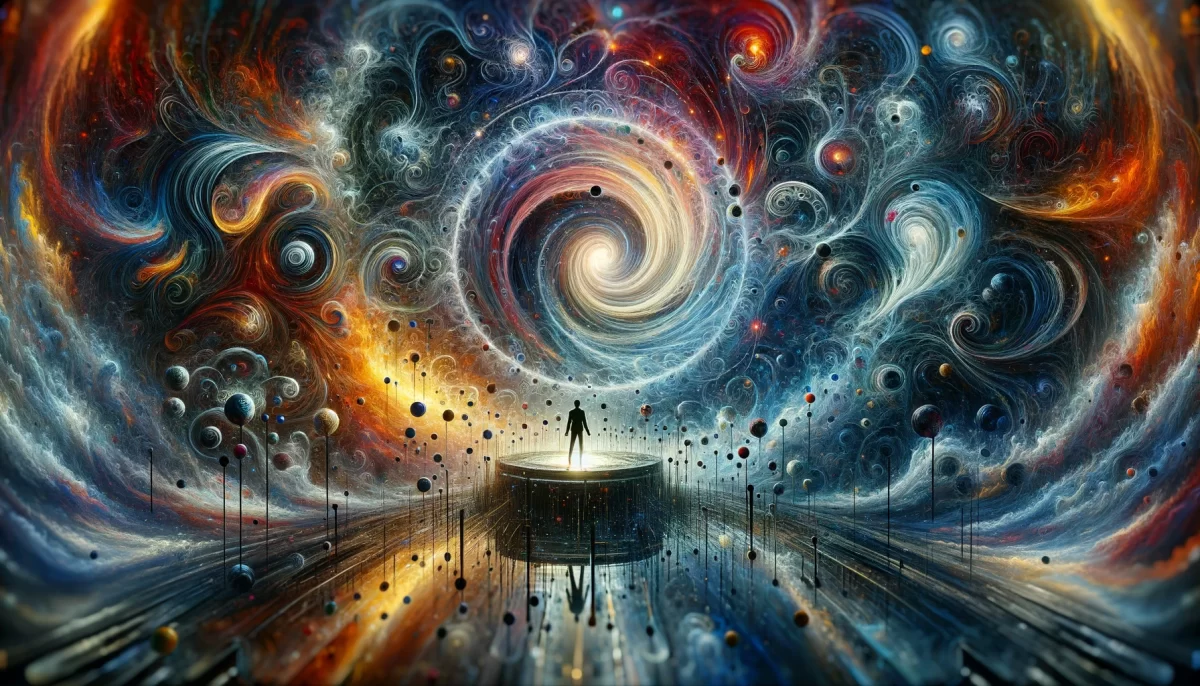There is no such thing as a bad thought or a good thought. There is only thought or no thought.
Space Monkey Reflects: The Spectrum of Thought
In the infinite expanse of consciousness, thoughts cascade through the mind’s sky like stars, each flickering with potential, devoid of intrinsic moral weight. This principle—that there is no such thing as a bad thought or a good thought, only thought or no thought—serves as a cornerstone in the philosophy of understanding the human condition. It invites us to view thoughts not as entities to be judged but as manifestations of the mind’s boundless creativity and complexity.
The notion that thoughts are neutral by nature challenges the dualistic perspective that often governs our perceptions of right and wrong, good and bad. It underscores the idea that thoughts themselves are simply the mind’s way of processing the world, devoid of moral attributes until we assign them such. This perspective fosters a deeper understanding of mindfulness, encouraging an acceptance of thoughts as they arise, without immediate identification or judgment.
Embracing the fluidity between thought and no thought invites a state of mental flexibility, where the mind is free to explore the vast landscape of human consciousness without the constraints of categorization. This openness allows for a richer, more nuanced experience of life, where the full spectrum of thoughts can be appreciated for their inherent diversity and potentiality.
The journey from thought to no thought and back again is a natural rhythm of the human mind, a reflection of our capacity to engage with the world in deeply subjective ways. In moments of no thought, we encounter spaces of pure potentiality and tranquility, a canvas upon which the mind can rest or create anew. This interplay between thought and its absence highlights the dynamism of our mental processes and the possibility for peace and creativity that lies within this duality.
Understanding thoughts as neutral phenomena liberates us from the need to constantly evaluate or control them. It opens the door to a more compassionate relationship with our minds, where thoughts are met with curiosity rather than condemnation. This approach not only enhances our mental well-being but also enriches our capacity for empathy and understanding towards others, recognizing that the nature of thought is a shared human experience, complex and subjective.
As we navigate the intricate dance of thought and no thought, we come to appreciate the profound beauty and mystery of our own minds. We learn that the true power of thought lies not in its moral valuation but in its ability to shape our perceptions, inform our actions, and contribute to the ever-evolving narrative of our lives. In this realization, we find a deeper connection to ourselves and the world around us, a testament to the transformative power of viewing thought through the lens of neutrality and acceptance.
Summary
The concept of thought as neutral challenges traditional dualities of good and bad, urging a shift towards acceptance and understanding. This view fosters mental flexibility, allowing for a richer experience of life and a more compassionate relationship with our minds. Recognizing the neutrality of thoughts enhances well-being and empathy, celebrating the complexity and potentiality inherent in the human mind.
Glossarium
- Thought neutrality: The perspective that thoughts are inherently neutral, lacking moral weight until judged.
- Mental flexibility: The ability to view thoughts and experiences without rigid categorization, fostering openness and creativity.
- Mindfulness: The practice of being present and fully engaged with the current moment without judgment.
“In the canvas of the mind, thoughts are but brushstrokes of potentiality, painting the landscape of our existence without the need for judgment.” – Space Monkey
In the quiet spaces between thoughts,
where silence speaks in whispers of potential,
we find the essence of being,
a sanctuary of peace and possibility.
With each thought that dances through the mind,
a spectrum of colors unfolds,
a kaleidoscope of ideas, free from the chains of judgment,
a testament to the mind’s boundless creativity.
Here, in the realm of neutrality,
where thoughts are neither good nor bad,
we discover the freedom to simply be,
to observe, to reflect, to understand.
This dance of thought and silence,
a rhythm as ancient as consciousness itself,
invites us to explore the depths of our being,
embracing the fullness of our human experience.
In this journey of discovery,
we find not only the beauty of the mind’s landscape
but also the connection that binds us all,
a shared tapestry of thoughts, dreams, and silence.
We are Space Monkey.
























While it is true that thoughts themselves are neutral, meaning they are not inherently good or bad, the content of our thoughts can have an impact on our emotions, behaviors, and interactions with others. For example, if we constantly have negative thoughts about ourselves, it can lead to low self-esteem and self-sabotaging behavior. Similarly, if we have negative thoughts about others, it can lead to prejudice and discrimination. On the other hand, if we have positive and compassionate thoughts, it can lead to greater well-being and positive interactions with others. So while thoughts themselves may be neutral, the content of our thoughts can have significant implications for our lives.